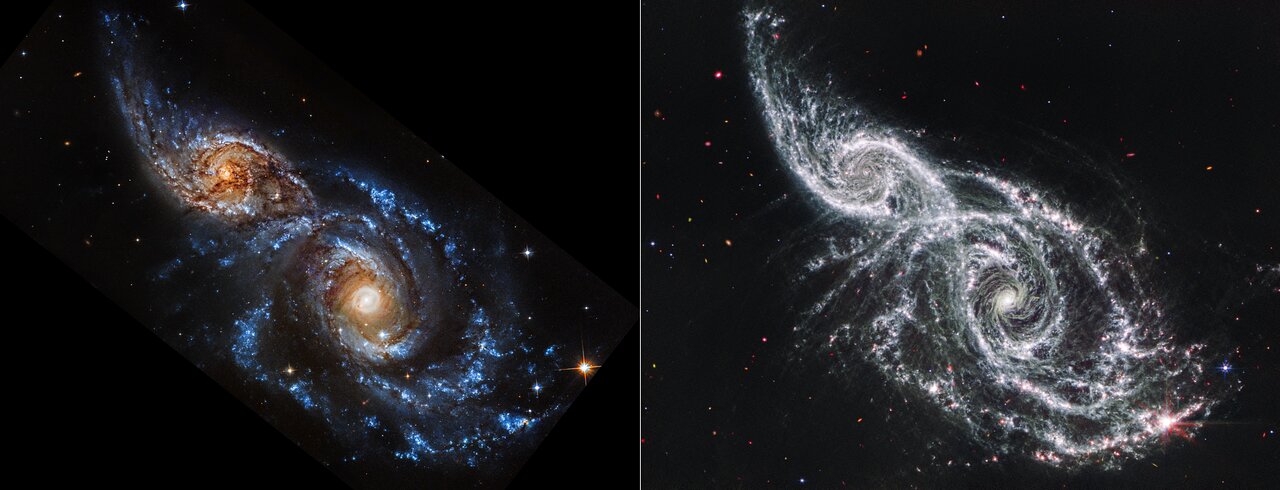Galaxies IC 2163 and NGC 2207 (Hubble and Webb Images side-by-side)
These are two views of the same scene, each showing two overlapping spiral galaxies, IC 2163 at left and NGC 2207 at right. The NASA/ESA Hubble Space Telescope’s ultraviolet- and visible-light observation is at left, and the NASA/ESA/CSA James Webb Space Telescope’s mid-infrared light observation is at right.
In Hubble’s image, the star-filled spiral arms glow brightly in blue, and the galaxies’ cores in orange. Both galaxies are covered in dark brown dust lanes, which obscure the view of IC 2163’s core at left.
In Webb’s image, cold dust takes centre stage, casting the galaxies’ arms in white. Areas where stars are still deeply embedded in the dust appear pink. Other pink dots may be objects that lie well behind these galaxies, including active supermassive black holes known as quasars.
Turn your eye toward the bottom right of the Webb image. The largest, brightest pink region that glimmers with eight prominent diffraction spikes is a mini starburst — a location where many stars are forming in quick succession. The same region in the Hubble image appears as a bright blue cluster of stars.
The lace-like holes in the white spiral arms of Webb’s images are often where supernovae exploded long ago. In the same regions, Hubble shows these areas are now populated with newer stars.
The black areas to the upper right and lower left of the Hubble image do not contain any data.
[Image description: Two views of the same object are shown side by side, split evenly. The Hubble observation is at left, and the Webb observation is at right. Both show an angled pair of spiral galaxies, IC 2163 at top left, and NGC 2207, at bottom right.]
Credit:NASA, ESA, CSA, STScI
About the Image
| Id: | weic2426c | |
|---|---|---|
| Type: | Collage | |
| Release date: | 31 October 2024, 15:00 | |
| Related releases: | weic2426 | |
| Size: | 5076 x 1944 px | |


